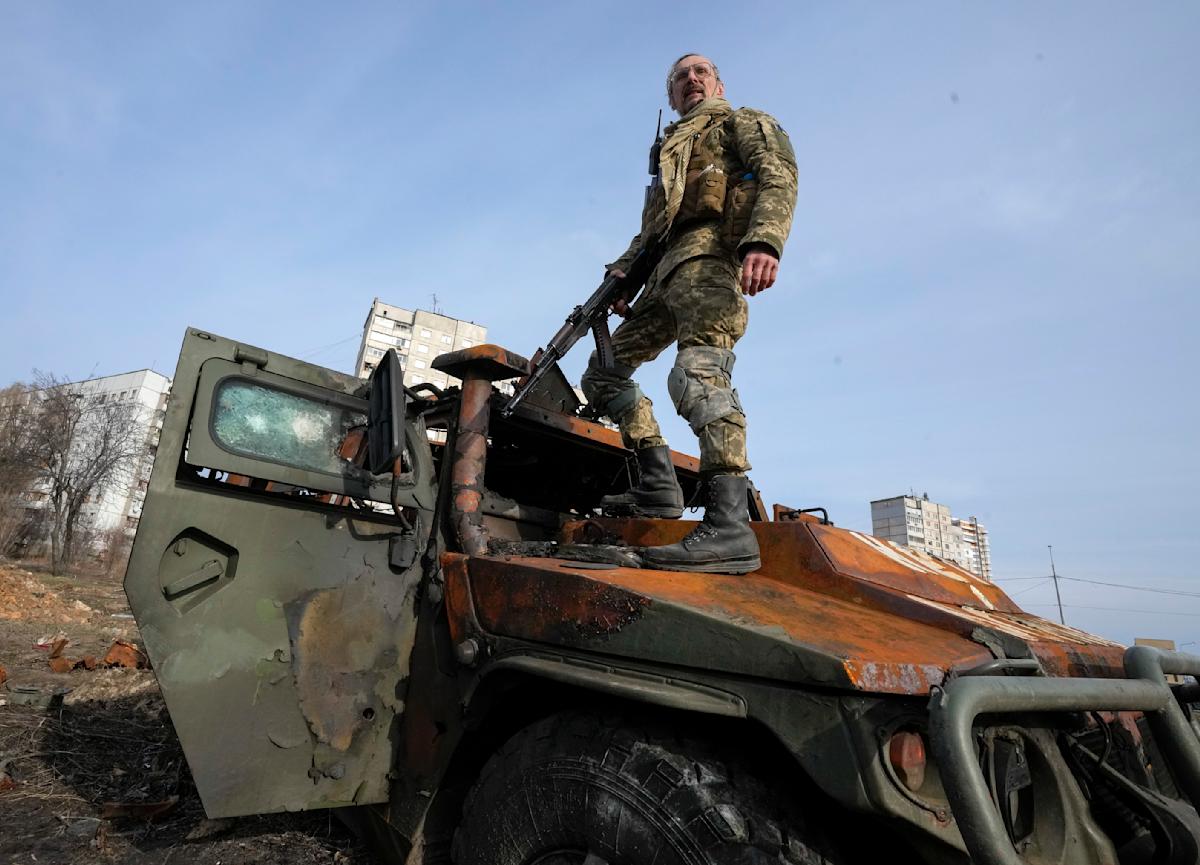The first phase of the war in Ukraine was largely a failure for Russia. The second phase is not going very well either.
After failing to capture Kyiv and oust Ukraine’s government, Vladimir Putin and his advisers turned to a less ambitious goal. They are trying to capture the Donbas region in eastern Ukraine. Russian troops do control large parts of Donbas and have made some recent progress. But it has been modest, and Ukraine has also retaken some strategically important territory.
“Russia’s Donbas offensive has certainly not been as dramatic in terms of gains as we thought it might be,” said Michael Schwirtz, a New York Times correspondent who has been covering the war from the front lines in Ukraine.
Sign up for The Morning newsletter from the New York Times
Putin is trying to dominate a crescent of land that stretches from the easternmost part of Ukraine, on the Russian border, to the Crimean Peninsula, which Russia annexed in 2014. Much of the eastern section is known as the Donbas region and includes two provinces (or oblasts), Donetsk and Luhansk. If you can remember the information in this one paragraph, you’ll have an easier time following analysis of the war.
‘Limited at best’
Here’s a partial rundown of Russia’s struggles:
— Russian troops have not taken control of any major cities in the Donbas region that they did not already control in February, at the start of the invasion, my New York Times colleague Julian Barnes notes. “Russian morale remains bad,” Julian says. “The casualties are bad.”
— British officials made a stunning announcement Sunday: Russia appears to have lost about one-third of the troops it has sent to Ukraine. The officials also said Russia’s Donbas push had “lost momentum and fallen significantly behind schedule.”
— One recent battle was so deadly for Russia that it has led to criticism from pro-Russia bloggers.
— “The Russian military has not yet achieved Putin’s stated territorial objectives of securing all of Donetsk and Luhansk oblasts and is unlikely to do so,” Katherine Lawlor and Mason Clark of the Institute for the Study of War in Washington wrote Friday. Yaroslav Trofimov of The Wall Street Journal has made similar points.
— Schwirtz noted that, until two weeks ago, he had not seen an aircraft in the sky for more than a month. But he has since seen several fighter planes and attack helicopters, all evidently Ukrainian. Russia’s inability to control the air is hampering its ability to advance.
— Avril Haines, the U.S. director of intelligence, told Congress last week that Russia was “increasingly unlikely” to meet its territorial goals in the coming weeks.
Putin’s edge
In the first phase of the war, Russian troops spread themselves too thinly across Ukraine as they tried to capture much of the country. Russian supply lines often could not keep up with their fighting units, and Ukraine’s military took advantage, surprising much of the world by repelling Russia’s advance.
“The Russians have since changed strategy,” Julian said. “They are moving much slower.”
Russia is effectively trying to win a war of attrition, gaining a small amount of territory each week and ultimately controlling all of the east. Putin could then try to reach a negotiated settlement that allows him to annex parts of eastern Ukraine. Many Ukrainians, as well as their staunchest allies in the West, fear that the United States and EU might accept such a settlement.
Putin’s biggest advantage remains his edge in resources: Russia has more soldiers and more military equipment than Ukraine. The West has narrowed this advantage by sending weapons to Ukraine, but Russia has destroyed some of that equipment in the fighting. One example: Some analysts believe that Ukraine may be running low on Turkish-made drones that have been effective in attacking Russian troops.
That’s why Ukraine’s president, Volodymyr Zelenskyy, continues to plead with the West for more weapons. President Joe Biden and leaders of both parties in Congress support a $40 billion package that the House has passed and the Senate seems likely to pass soon. Much of Europe has also aligned itself strongly with Ukraine; Sweden and Finland have moved in recent days to join NATO.
Still, Putin’s new go-slow strategy could succeed, especially if the West ultimately tires of helping Ukraine. Many Trump-friendly Republicans are already skeptical of the war: Tucker Carlson makes this case on his Fox News show, and 57 House Republicans voted against the $40 billion aid package.
On the other hand, Russia faces its own domestic challenges: Sanctions are damaging its economy, and the industrial sector — which cannot easily import parts — is struggling to make enough precision weapons, Julian said.
Russia is also running low on troops who are available to fight. Putin could increase these numbers by instituting a draft. But doing so would require him to acknowledge that the war in Ukraine is, in fact, a war rather than the modest operation he has portrayed it as — probably because he knows public support is soft.
“As it stands, Russian options are shrinking,” Michael Kofman of CNA, a Washington research group, wrote recently. “The more they drag their feet, the further their ability to sustain the war deteriorates, and the worse their subsequent options.”
For now, Lt. Gen. Scott Berrier, a top U.S. intelligence official, told Congress, “the Russians aren’t winning, and the Ukrainians aren’t winning.”
© 2022 The New York Times Company




